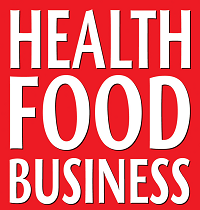Header
Lessons in botanicals have been held for health stores as part of Viridian’s recent tour with Chris Kilham.
The company’s Education Tour featured the Medicine Hunter, Chris Kilham, who brought his knowledge on healing botanicals to independent health stores.
Health store staff from across the UK and Ireland attended the talk as part of the 2022 Viridian Education Tour, which focused on the importance of the sustainability of nature’s powerful ingredients and why provenance matters.
Chris, an author, educator and botanical expert, discussed popular and highly effective medicinal plants, such as saffron and ashwagandha, and meeting the passionate growers and communities in their native countries. Viridian believes that understanding the provenance of their ingredients and considering every step from the seed to the recycling bank is crucial to ensure we produce effective, ethical and pure supplements.
Chris explained: “I travel to many remote locations around the world in search of botanicals, so it’s a privilege to be able to share these rare photos and insights with health retailers, to aid their understanding of specific herbs. I’ve really enjoyed seeing health stores in the UK and Ireland and meeting them face-to-face. They’ve been a very enthused and engaged audience, which is great to see.”
Aimée Benbow, Head of Nutrition at Viridian Nutrition, also spoke during the tour about botanicals supporting menopausal symptoms and carried out book signings of the new guide, The Menopause Journal.
Commenting on the talk, retailer, Emma Cooper, from Healthy Pulses, Plymouth, said: “We all at Healthy Pulses loved our training night in Exeter, which has helped increase our knowledge. Thank you Viridian.”
Aimee McMullen, from Health Matters, Dublin, added: “Thanks to Chris Kilham, Aimée Benbow and Viridian for the amazing talk. It was a great evening and very informative with staff from our stores in Bray, Crumlin, and Grafton Street in
attendance.”
Mel Ratcliffe, from Bare Health, went on: “Always learning, we were privileged to attend a fabulous training event in Manchester last night to meet and listen to speakers, Chris Kilham Medicine Hunter and Aimée Benbow of Viridian Nutrition.”



